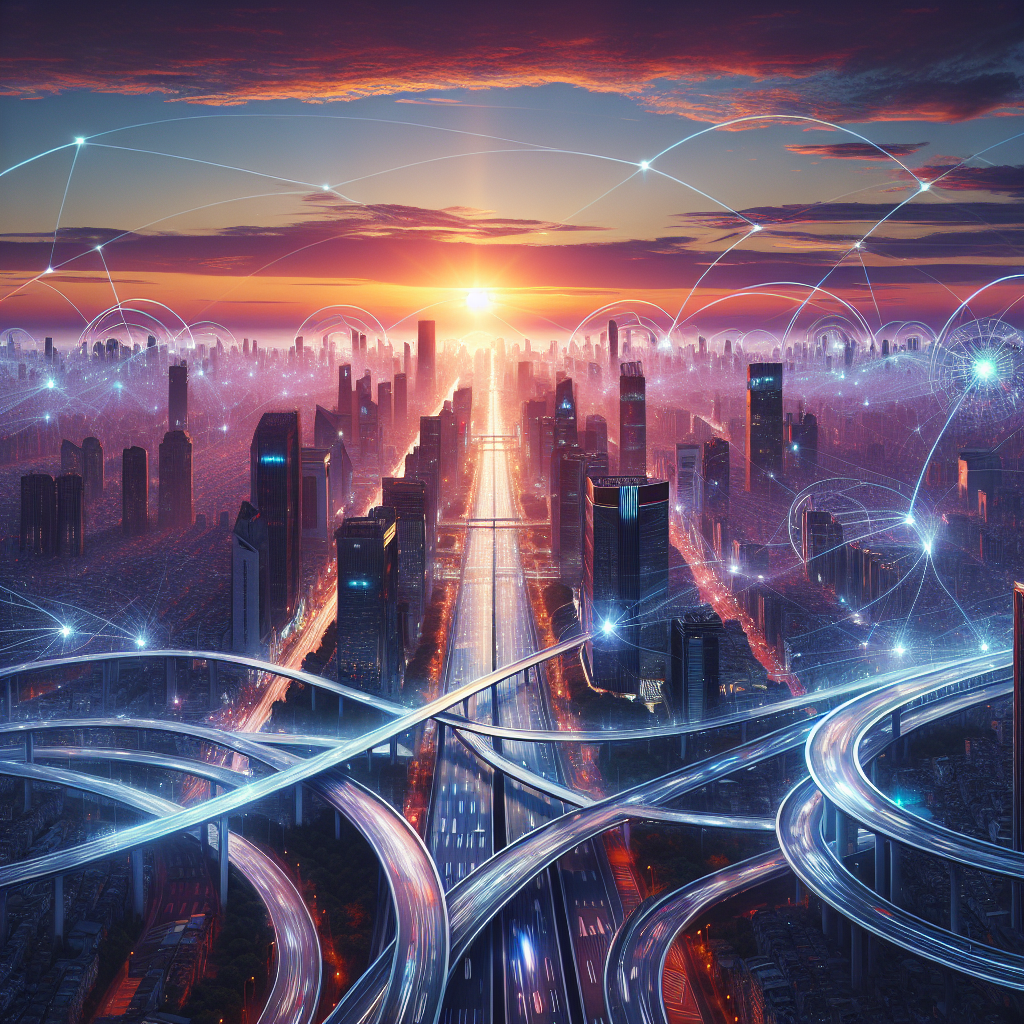Intelligent Transportation Systems using AI

Revolutionizing Mobility: The Role of AI in Intelligent Transportation Systems
Introduction
In an era marked by rapid urbanization and growing populations worldwide, existing transportation infrastructures face unprecedented challenges. Cities are grappling with traffic congestion, pollution, accidents, and inefficient public transport systems. However, the rise of technology heralds a transformative solution: Intelligent Transportation Systems (ITS) powered by Artificial Intelligence (AI). These advanced systems promise to redefine urban mobility, offering safer, more efficient, and environmentally friendly travel experiences.
This comprehensive blog post explores the world of Intelligent Transportation using AI. We will examine ITS components, benefits, challenges, and potential future developments. By harnessing AI’s power, these systems can process data in real-time, learn from patterns, and make informed decisions that optimize traffic flow, reduce emissions, and enhance passenger experiences.
The Backbone of Intelligent Transportation
1. Understanding Intelligent Transportation Systems (ITS)
Intelligent Transportation Systems (ITS) encompass a wide range of advanced applications designed to offer innovative services for various transport modes and traffic management. These systems enable users to make better-informed decisions, use transport networks more efficiently, and ensure safer journeys.
- Components of ITS:
- Traffic Management Centers
- Advanced Traffic Control Systems (ATCS)
- Intelligent Traffic Signals
- Connected Vehicles
- Smart Public Transit Solutions
2. AI in Action: Key Components
AI is the driving force behind the efficiency and functionality of ITS:
Data Collection and Analysis:
- Sensors, cameras, and IoT devices collect data from vehicles, traffic lights, and road conditions.
- Machine learning algorithms analyze this vast influx of data to predict traffic patterns and identify congestion points.
Decision-Making Algorithms:
- AI systems utilize predictive analytics for real-time decisions on traffic light timings, rerouting suggestions, and emergency response measures.
Autonomous Vehicles:
- Self-driving cars use AI for navigation, obstacle detection, and collision avoidance, enhancing road safety.
The Benefits of Intelligent Transportation Systems
1. Enhancing Traffic Efficiency
AI-driven ITS can significantly reduce congestion by optimizing traffic flow:
- Dynamic Traffic Signals: Adjust signal timings based on real-time traffic data to minimize intersection wait times.
- Predictive Traffic Management: Use historical and real-time data to foresee traffic build-ups and adjust routes accordingly.
2. Improving Road Safety
ITS, powered by AI, enhances road safety through:
- Accident Prediction: Identify potential accident hotspots using pattern recognition techniques.
- Emergency Response Systems: Enable quicker emergency response times with automated alerts and optimal routing for emergency vehicles.
3. Reducing Environmental Impact
Intelligent Transportation Systems contribute to a lower environmental footprint by optimizing vehicle emissions, making transportation more sustainable:
- Optimized Traffic Flow: Reduces idling time and fuel consumption.
- Encouragement of Eco-Friendly Transport Modes: Promotes the use of public transit and non-motorized transport.
4. Enhancing Passenger Experiences
ITS powered by AI delivers enhanced passenger experiences through real-time updates and personalized services:
- Real-Time Updates: Provide passengers with up-to-the-minute information on schedules, delays, and alternative routes.
- Personalized Services: Tailor travel options to individual preferences and needs.
Case Studies: Real-world Applications of ITS
Smart City Initiatives
Cities like Singapore and Barcelona have implemented smart transportation systems that leverage AI to manage traffic efficiently. For instance, in Singapore’s Smart Nation initiative, AI algorithms optimize public transport routes based on passenger demand data collected through mobile applications.
Autonomous Shuttles
Several cities are testing autonomous shuttle services, such as those in Las Vegas and Paris. These shuttles use AI for navigation and real-time decision-making to ensure safe operation within urban environments.
Challenges in Implementing Intelligent Transportation Systems
Despite their numerous benefits, implementing ITS faces several challenges:
1. Data Privacy Concerns
The extensive data collection necessary for effective ITS raises significant privacy issues. Ensuring robust data protection measures is crucial as personal travel information could be exposed to misuse if not adequately secured.
2. High Implementation Costs
Deploying sophisticated AI systems and infrastructure requires substantial investment, which can be a barrier for many municipalities with limited budgets.
3. Interoperability Issues
The need for different ITS components to work seamlessly together poses significant technical challenges due to varying standards and technologies used by different manufacturers.
Future Directions in Intelligent Transportation Systems
Looking ahead, the integration of AI into ITS will continue to evolve with advancements such as:
5G Connectivity: Enhanced connectivity will enable faster data transmission, allowing real-time analysis and decision-making for ITS applications.
V2X Communication: Vehicle-to-everything (V2X) communication facilitates information exchange between vehicles and infrastructure, improving traffic management and road safety.
AI-driven Predictive Maintenance: Using AI to predict maintenance needs can minimize downtime for public transport systems and improve service reliability.
Conclusion
The integration of AI into Intelligent Transportation Systems represents a significant leap forward in addressing the challenges faced by modern urban centers. By optimizing traffic flow, improving road safety, reducing environmental impact, and enhancing passenger experiences, ITS offer a transformative solution for the future of transportation.
As we continue to apply AI to optimize these intelligent systems, cities worldwide can look forward to more efficient, safer, and sustainable transportation networks. While challenges remain in data privacy, costs, and interoperability, ongoing advancements promise a brighter future for urban mobility powered by AI.
By embracing these technologies and overcoming existing barriers, the vision of seamlessly connected, efficient, and environmentally friendly transportation systems is within reach, marking a new era in how we travel and live in our cities. As ITS continue to evolve with technological advances, their role in shaping sustainable and smart urban environments becomes ever more crucial.
